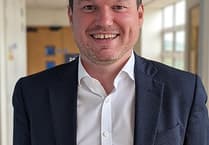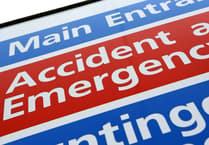GP surgeries may have to cut the amount of appointments they offer patients due to rising staffing costs.
There are more than 1,900 patients for every GP in Gloucestershire as doctors complain of a shortfall in funding.
Bob Hodges, chairman of the local medical committee for Gloucestershire which represents more than 500 GPs in the county and over 70 practices, told councillors of the challenges.
His organisation represents 27 per cent of the doctors in Gloucestershire as general practitioners, 15 per cent of the clinical staff and only seven percent of the nurses
“We have less than 10 per cent of the overall NHS budget. That’s a nationally set figure,” he told Gloucestershire County Council’s health overview and scrutiny committee meeting on March 12.
“That proportion has declined over the last few years. We’ve got the same number or fewer GPs seeing the same number of patients many more times.
“As a rough rule of thumb, I liken the situation of being a GP, to having ten per cent more people with twice as much wrong with them seeing 10 per cent fewer GPs, twice as often.
“The maths of that just don’t work. That’s probably why people perceive general practice has changed and their ability to access general practice has changed.
“We are setting ourselves up to try to deal primarily with need. We don’t get much credit for that. We will get scrutinised for where demand has perceived not to have been met.”
He said at Aspen medical practice in Gloucester, where he is a partner, there are 31,000 patients registered there.
And the county has around 349 whole time equivalent general practitioners serving a population of just under 690,000 patients.
“That averages out at 1,975 patients per general practitioner. The British Medical Association has 1,600 as a target.
“There is an inflation component to that as well as the average age of the population increases. The number of patients with chronic diseases increases.
“If you apply an American healthcare approach to that, that would leave about 130,000 patients in Gloucestershire without a GP.
“The needs of a patient will increase exponentially with the number of chronic diseases they are known to have. That is largely a function of age.
“Sometimes it is a function of deprivation and that frailty associated with that coming earlier in life. That is more of a problem in Gloucester and the Forest of Dean.”
He said there were 300,000 appointments in primary care in December, 42 per cent of which were completed on the day patients contacted the practice. And two out of three were face to face.
However, he said one of the main challenges GP practices have as employers includes the rise in the national living wage.
“We are employers,” Dr Hodges said. “My organisation has over 140 staff members.
“A lot of are staff are not high earners and with the increase in the national living wage of 8.9 per cent this year that does put an extraordinary amount of pressure on practice finances.
“GPs are financed per patient, per year. If our increase in funding does not match the increase in cost then there will be pressures.
“We are getting to the point where there are a lot of practices which may reduce the capacity of appointments and reception because it’s financially impossible to replace staff.
“Also if your lowest member of staff has a 8.9 per cent increase many more of your staff will require something approaching that to maintain that appropriate level of increase over minimum to reflect skills and experience.”




